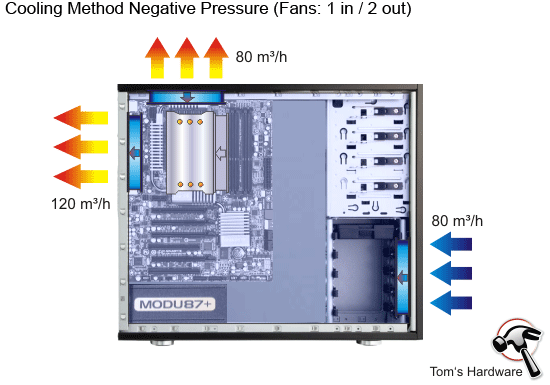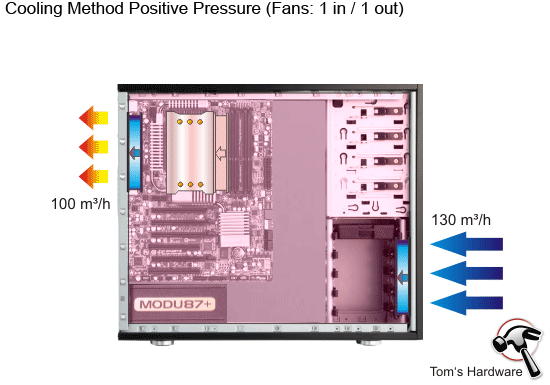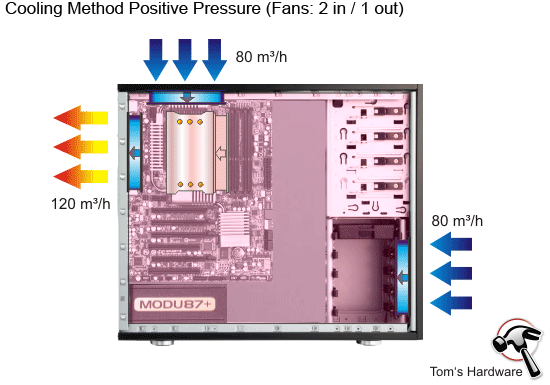How To: Properly Plan And Pick Parts For An Air-Cooled PC, Part 2
After discussing the theory of PC cooling, in Part One, we now move on to technology and implementation, discussing case fans, CPU coolers, and thermal grease. We even wrap up with a recipe you can use if you fail to cool your PC properly.
Case Fans: Should You Worry About Positive Or Negative Pressure?
Much Ado About Dust
If your case is more or less airtight (fan openings excluded), the ratio between intake and exhausted air determines whether positive or negative pressure develops inside. Let’s take a look at schematic drawings showing the use of fans with different air flow capabilities, which also applies to groups of fans with different cumulative totals:
Negative Pressure
Benefits
• Good cooling performance for performance-oriented situations
• Amplification of natural convection
• Linear and direct air flow
• Compatible with all direct heat exhaust graphics cards (the ones that blow dissipated heat out of a vent built into the shroud)
• Augments the cooling performance of downward-facing CPU heat sink fans
Drawbacks
• Without a dust filter, dust gathers inside the case
• Graphics cards without the ability to exhaust heat don’t benefit much
Get Tom's Hardware's best news and in-depth reviews, straight to your inbox.
Positive Pressure
Benefits
• Only average cooling performance in enthusiast-oriented configurations
• Better support for graphics cards without the ability to exhaust dissipated heat
• All case openings contribute to getting heat out
• Less dust in the case
Drawbacks
• Counters convection
• Air flow is determined by size/position of case openings
• Counteracts the cooling performance of downward-facing processor coolers
• Graphics cards with DHE (direct heat exhaust) can partly counter the overpressure
Analysis
If you want maximum PC performance, which means turning massive amounts of electricity into heat, you should carefully consider the cooling strategy you want to adopt and the best-suited case for it.
Keep in mind that you cannot achieve positive pressure in a case with meshed surfaces or lots of openings. If you want to go that route, you should also be sure that the heat sink on your processor isn't being artificially handicapped.
Current page: Case Fans: Should You Worry About Positive Or Negative Pressure?
Prev Page Case Fans: Speed Control Next Page Case Fans: Recommendations
Igor Wallossek wrote a wide variety of hardware articles for Tom's Hardware, with a strong focus on technical analysis and in-depth reviews. His contributions have spanned a broad spectrum of PC components, including GPUs, CPUs, workstations, and PC builds. His insightful articles provide readers with detailed knowledge to make informed decisions in the ever-evolving tech landscape



